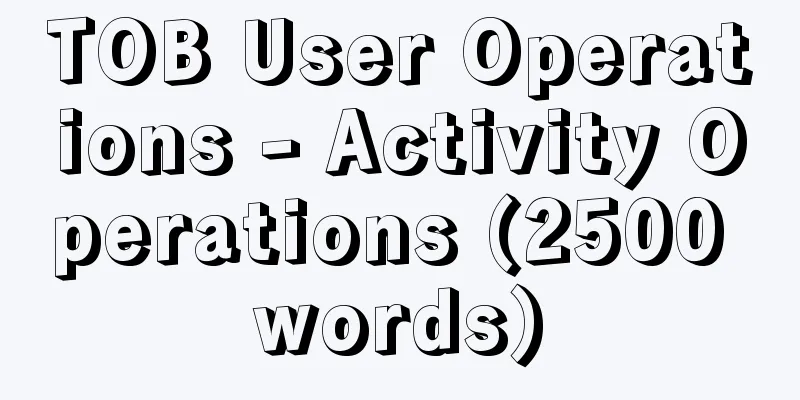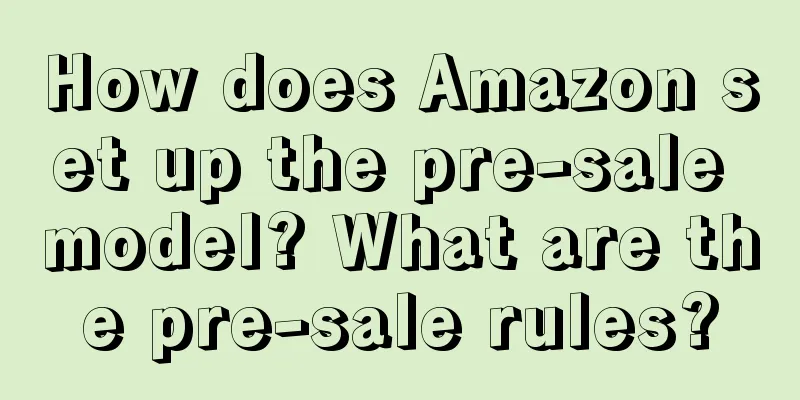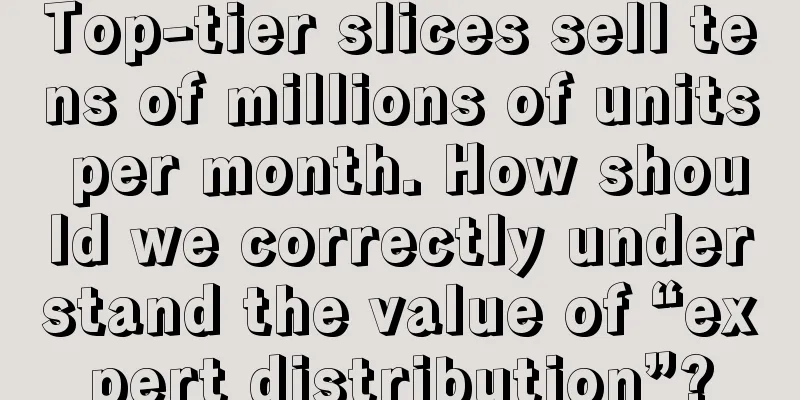Quick Unlock in One Article: Price Analysis Model

There are always new data people complaining that their analysis is criticized for not being comprehensive or in-depth. What should we do? Let's get started with the case today! Problem scenario: A video website charges monthly memberships, and now it is learned that its peers are preparing to raise prices, and they are preparing to raise prices together. After the price increase, the data analyst is required to evaluate the effect of the price increase. If you are the data analyst of the company, how would you evaluate it? 1. The most basic price increase modelRevenue = total number of users * purchase rate * average amount per person. Everyone knows this formula. So the question is: what impact will the price increase have? Answer: After the price increase, the purchase rate may decrease, and the average amount per person may increase. As for whether the total revenue will increase or decrease after the price increase, it depends on the change ratio of the two. This is the most basic price change evaluation model (as shown below) Price sensitivity can be tested in advance. You can use coupons as leverage and draw prizes to test the user's purchase rate, so as to infer the appropriate price increase/reduction to a certain extent. However, this method is more suitable for testing price reductions. If the price increases, users will instinctively be more disgusted, so it is not very suitable. So, does it end here? 2. Consider product attributesThe decline in user purchase rate will be affected by the following factors:
The first four of these five factors are easy to understand intuitively, and the fifth one needs a little explanation: the so-called level of awareness refers to how much users care about this matter. In our lives, many fees are deducted silently, such as water, electricity, gas, and phone bills. Unless there is a sudden surge in a certain month, or the merchant actively promotes a marketing campaign, these bills may flow through people's fingertips. So the question is: How many of the above items do the products for video memberships meet? Almost all of them (as shown below) This is probably why the operator has the confidence to raise prices. In recent years, people's online entertainment has increased significantly, which can be easily observed from data such as DAU, online time, and continuous playback rate. Since rigid demand is increasing, awareness is inherently low, and prices are not expensive, then it is a sure win if prices go up. So, considering this level, is it enough? 3. Consider the details of price increaseThe biggest difference between the price of video membership and rice and flour is that the price anchoring is completely artificial. The marginal cost of providing an additional user service is almost zero, so the operator can arbitrarily adjust the price and create a new anchoring point, thereby blurring the user's judgment. For example, originally there was only one membership fee of 25 yuan per month, but now a service is launched that automatically activates a continuous monthly subscription for 20 months. At first glance, it is 5 yuan cheaper, so users are likely to activate it. However, considering the actual usage rate changes (for example, I become a member just to catch up with a hit drama, but rarely watch it after catching up), it is very likely that in the following months, the user will forget to cancel the payment and the extra money will be deducted by the automatic payment. This is a strategy of apparent reduction but hidden increase . Note that this strategy has a problem, that is, revenue will decrease in the short term. Therefore, you can also think in reverse and set a strategy of increasing revenue in the open but decreasing revenue in the dark, by sacrificing the ARPU value in subsequent months to quickly increase revenue in the short term and reap a profit (as shown in the figure below). Of course, you can also use the alliance package method to directly launch a new package to further blur the price anchor. For example, you can bring in the food delivery platform to offer membership together and package the price. Don't take out your phone, and ask you how much a monthly membership of Meituan or Ele.me costs! More than 80% of people can't answer, but they feel: it only costs 40 or 50 yuan to get membership of both platforms, which is a good deal, anyway, you have to order food delivery. In short, the more vague the price anchor, the more likely users are to bear the price increase . Therefore, this question should not be asked in this way from the beginning. If in a real working environment, the first thing a data analyst should do is to find out:
Only by knowing these can we predict the business trend and know which business results are expected and which are unexpected. Otherwise, we may work hard for a long time and end up saying "I knew it earlier". However, there is still a question here, that is, will consumers really buy into the business’s wishful thinking? 4. Consider User BehaviorNote that each of the above strategies has its own prerequisites, such as: Obvious reduction and hidden increase strategy: There is a sufficient proportion of indifferent users/low cancellation rate Obvious increase and hidden reduction strategy: Users have a sufficient payment rate for quarterly/annual packages Anchoring fuzzy strategy: The joint product must have a sufficient user base If these premises are not met, the minute-by-minute strategy will fail, or it will not attract enough users, or it will be snatched away by others. Therefore, the user's purchase conversion rate and repurchase rate will directly affect the price increase effect. Let's go a step further and ask: What are the factors related to user purchase conversion rate and repurchase rate? Maybe everyone can easily come up with reasons such as: there are popular dramas to watch, other companies have raised prices more sharply, and new users have no idea about the charges. But please note: these reasons cannot be quantified by data. Therefore, we need to find something that can be verified with data , such as: reduced online frequency, reduced single online time, reduced continuous playback, etc., to distinguish between new and old users (as shown in the figure below). This way, we can find deeper reasons, rather than just repeating the chart again, such as: since the price increase, the sales of the 20 yuan package have decreased. So, considering this level, is it enough? 5. Consider business actionsAll prices are rising:
These practices are all to achieve different effects by changing the promotional language, promotional rhythm, and promotional timing when the price adjustment is confirmed. Especially for virtual products, when the price anchor is vague, it is easier to give consumers an illusion, thereby producing a stronger/weaker effect. As a data analyst, it is necessary to understand these specific details in order to fully evaluate the time range of the impact of the price increase, rather than naively following the most basic model and calculating from the moment of the price adjustment. VI. ConclusionIn summary, a seemingly simple question and seemingly simple business logic can give rise to various possibilities when combined with specific industry characteristics, product attributes, user habits, and business actions. Therefore, if you want to do a comprehensive assessment, you must have a deep understanding of the business details and sort out the business assumptions in advance. This will clearly define when the impact cycle starts, and which user behaviors are naturally evolved and which are driven by promotions. Otherwise, if you don't think deeply and just naively put out the daily payment data, you will not only fail to see the meaning behind the data, but will also be defeated in the business's round of attacks. Author: Down-to-earth Teacher Chen WeChat public account: Down-to-earth Teacher Chen |
<<: Xiaohongshu's compliance operation guide, no more "violation letters"
>>: How User Researchers Conduct Research in Organizations with Low UX Maturity
Recommend
With the rise of the male beauty economy, how can the beauty and personal care market capture new groups and increase growth?
This article starts from the reasons for the rise ...
Data analysis report, how to write the [Suggestions] section?
How to make effective strategic suggestions in dat...
How to highlight brand personality and gain more fans?
To some extent, we can understand "brand pers...
Half a year has passed, where has the AI video gone?
What stage has the AI video track reached? Can A...
My opinion on Dong Yuhui's sudden deletion of his Weibo account
On the 27th, Dong Yuhui once again became a hot to...
What is the overall strategy of Amazon advertising? Three major strategies shared
As the Amazon platform continues to grow, more and...
How to make consumers like your product as much as the founders?
What role does Xiaohongshu play in brand sales in ...
Is it a big investment to set up an independent website? What aspects require money?
An independent website is a website built and mana...
What is the process of transferring an etsy store? Precautions
If you want to sell something on the Etsy platform...
Cloud booking, adding seats, charging for concerts, a new "leek-cutting" show is coming?
Why are there still consumers willing to pay for &...
A guide for operators: a reference map of major events of Xiaohongshu brand IP in the past 25 years
In the traffic depression of Xiaohongshu, making p...
Baking frequently fails, but this brand opened in the suburbs has an annual revenue of over 10 million per store
This article analyzes the steady development of He...
8 particularly interesting sentences
This article shares some interesting advertising c...
9.9 yuan, to rectify or save hot pot? | Midfield War
The hot pot industry has not been immune to the do...
New Year's Tips: Marketing and Communications from "Experience" to "Science"
In the digital marketing era, marketing and commun...









